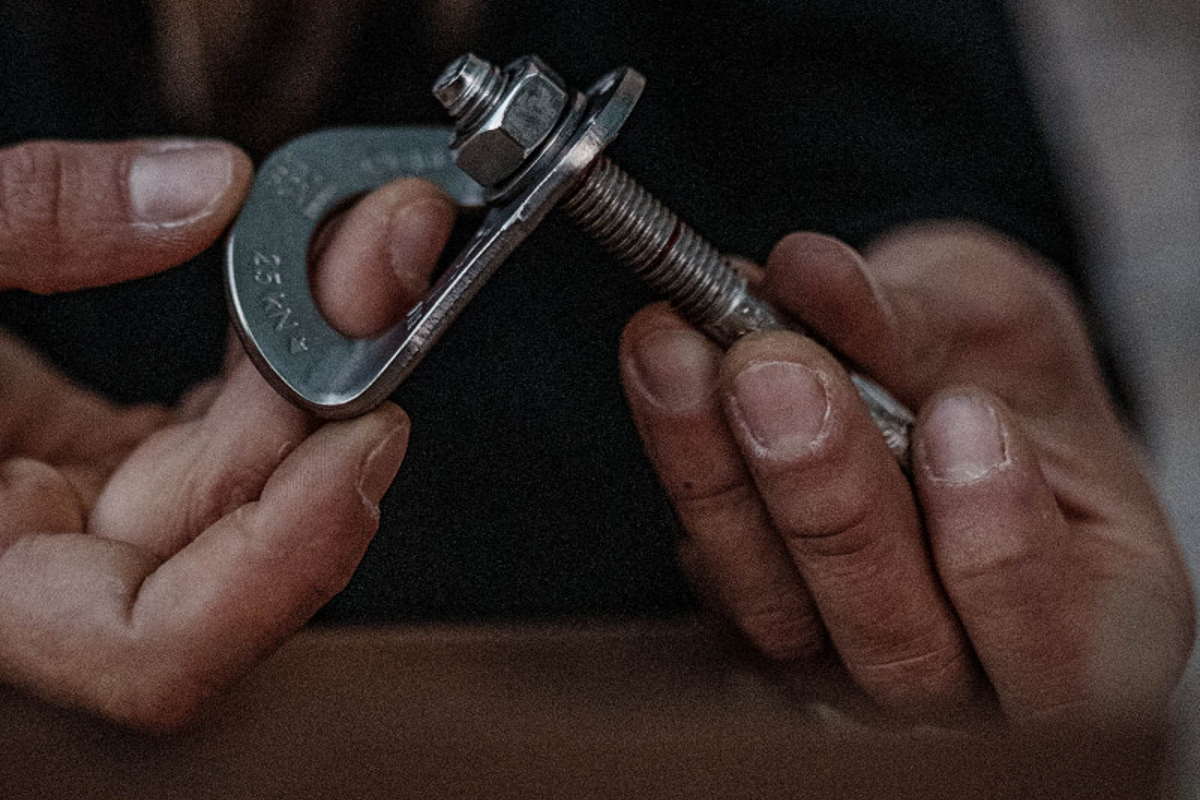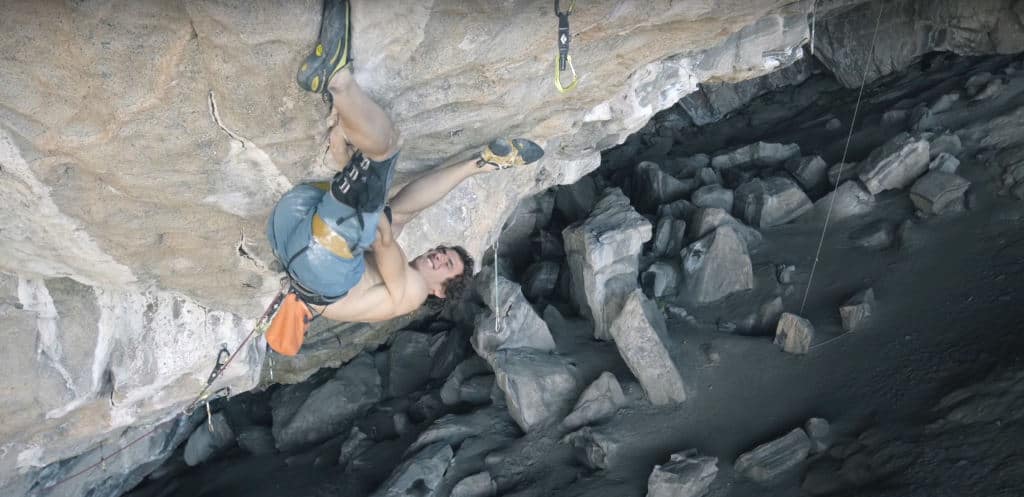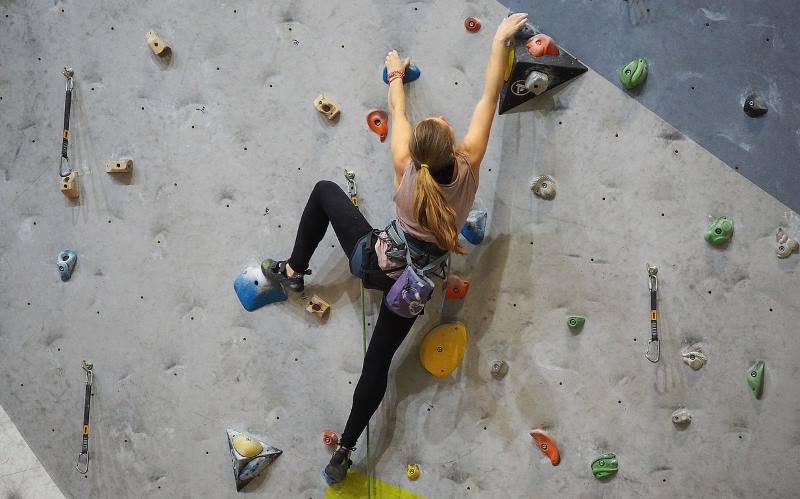One of the more common climbing terms and one of the easiest to explain. Climbing a route onsight is what most people prefer for fun as well as what pro climbers aspire to at the highest level.
What Counts As An Onsight In Climbing?
Simply put, climbing onsight means climbing a route “clean” in one go without getting beta or taking a good look at it before trying it. It’s the ultimate test of your mental and physical climbing abilities
The general consensus is that it’s fine to spy out and plot a route from what you can see off the floor. However, you can’t rappel in and take a look, use binoculars, get beta before your try or while you’re on the route, watch videos of others climbing it, or read detailed guidebook descriptions.
Onsight Climbing “Rules”
You must climb the route from the ground up, without falling or resting on your rope (i.e the rope is tight and takes some or all of your weight). If you fall or rest on the rope, you can no longer call it an onsight or a flash. Having someone pre-placed the quickdraws for you and maybe clean the holds (but not tick or chalk them) is OK too.
If a guidebook says anything more than “the route on the left of the flake, spicy” then you might be getting beta. Knowing about the types of holds is probably not OK as you know what to look for and what to prepare for. Knowing not to use certain holds that aren’t in, or to avoid going onto another route is basically fine.
Essentially if you know anything that gives you an unfair advantage it’s not an onsight and would then be a flash. Tick marks from a friend are a definite no but there might be chalk from other climbers’ attempts that are just on the line. Knowing the type of rock from your warm-up or taking a good look from the ground are OK and can give you valuable information.
Onsighting Is More Fun
For many, trying to onsight most of your climbs is the most fun. Especially on holiday when you can move from crag to crag to try and onsight as much as possible. You get to try new things and engage your brain without repeating things or getting frustrated on certain moves.
As you start to push up the grades you’ll want to move on to redpointing routes to be able to push upwards. At a certain point, you’ll need to train weaknesses, spend time “working” routes, and think about conserving energy instead of climbing every route at the crag.
This can be engaging in a different way and some prefer pushing their redpoint grade than onsighting or flashing routes. Personally, we love improving because we get to climb more stuff and try different styles out for size.
Onsight Cheating?
There is deliberation on what the exact rules are but these are some of the generally accepted do’s and don’ts. Having quickdraws pre-placed is a contentious thing but generally accepted – as with flashing and redpointing. It used to be that placing the draws was an integral part of the climb.
Some might say even knowing the grade or standing on a rock to get a slightly better look is cheating – but as with everything in climbing it’s really down to consensus and ethics change. Claiming an onsight because you weren’t paying attention while belaying, forgetting you saw it done before, or it started raining on your first try probably won’t fly.
More Climbing Jargon Explained
– What Is Climbing Beta?
– What Is A Redpoint In Climbing?
– What Is A Runout In Climbing?
– What Is A Sandbag In Climbing?
– How Do Rock Climbers Get Down?
How To Onsight A Climbing Route?
Onsighting a route that pushes your limit requires you to be totally warmed up both mentally and physically. You’ll want to have warmed up your muscles on a slightly challenging route but also have climbed a route or two that aren’t straightforward. This will make sure you’re switched on mentally.
The key skill needed is the ability to make the right decisions fast. You need to know when to expend energy and when to rest and recalculate. Have enough energy in the tank to correct course if you get the wrong holds or feet, or need to readjust on a hold.
Making mental notes on places where you can downclimb to try again can be the difference between pumping out and falling or getting another chance. Note – You can’t downclimb to the ground.
What Is The Hardest Onsight?
The hardest onsight grade is 9a / 5.14d. There have now been a few 9a onsights, see below!
What Are The Hardest Routes Onsighted?
The first was the 9a / 5.14d called “Estado Critico” in Siurana, Spain. Alex Megos climbed the route first try with no information back in March of 2013.
The route was previously an 8c+ but a hold broke and it became a 9a by consensus from others. Since then a downgrade to 8c+ again has been suggested by Gonzalo Larrocha who may have found better beta. He’s done many other 9a’s so it might turn out that Alex Megos didn’t technically get the first 9a.
Later that year Adam Ondra onsighted “Cabane au Canada” in Rawyl, Switzerland for his first 9a onsight. In 2014 Adam then did two more onsights with “Il Domani” in País Vasco, Spain, and “TCT” in Gravere, Italy. In 2017 Alex Megos also onsighted “TCT”.
Adam Ondra has onsighted three 9a routes and Alex Megos has onsighted two. No other climber has onsighted at this level… yet.
Janja Garnbret is the first female to onsight 8c, climbing two within two days of each other. For real.
Do Routes Get Downgraded If They Get Onsighted?
Not as a rule but there have been plenty of climbs that have been onsighted and then downgraded. Adam Ondra is infamous for this. The year before Alex Megos’ first 9a onsight of “Estado Critico”, Ondra onsighted two 9a’s “Golden Ticket” and “Pure Imagination” in one day and suggested an 8c+ for both.
Onsight Vs Flash
A flash in climbing is when you climb the route from the ground up first time – but you are allowed to check holds, know beta, rappel in and look, watch videos e.t.c. As long as you don’t pull on holds or practice moves at all, that’s OK.
Flashing a route is easier than an onsight because knowing the beta for a route is really important. Certain routes are all about one specific “crux” section that might be way easier if you know the exact sequence. Even knowing the type of holds is a big help.
What Happens If You Fall On An Onsight?
There are no second chances on an onsight – even if a bird attacked you mid-route or it was a bad belay. You can’t even say it was a flash!
Now you have to attempt the route as a redpoint.
Can You Onsight On Toprope?
If people say they’ve onsighted something they normally mean it was on lead. However, if you mainly top rope then the mental challenge of getting it right first time is still there. Many logging systems like UkClimbing’s logbook allow you to mark a climb as a top-rope or second onsight.
Onsight Or Onsite?
It’s onsight. Like, “on first sight”.
Can You Onsight A Boulder?
Sort of? The problem with trying to onsight a boulder is that you can normally see most of the holds and figure out beta fairly easily. Most boulderers will say they flashed a problem if they did it first time.
At higher levels bouldering pros will generally brush and chalk most of the holds before an attempt, taking a good close look at and feeling all of the holds too.





1 thought on “What Does Climbing Onsight Mean? – Climbing Jargon Explained”
Comments are closed.